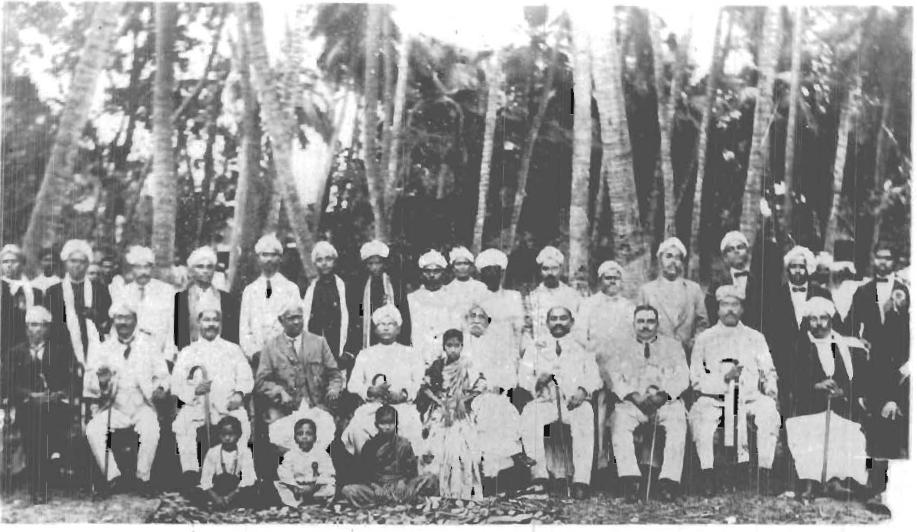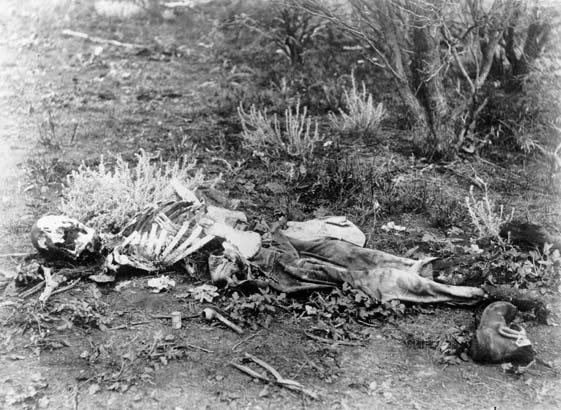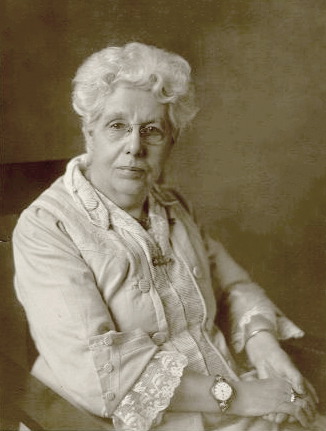|
Dravidistan
The Dravida Nadu movement was a separatist movement seeking to create a homeland for the Dravidians by establishing a sovereign state in the predominantly Dravidian-speaking southern regions of British India consisting of Telangana, Andhra Pradesh, Tamil Nadu, Karnataka and Kerala. It was started by the Justice Party under Periyar and later the Dravida Munnetra Kazhagam (DMK) led by C. N. Annadurai. Initially, the demand of Dravida Nadu proponents was limited to Tamil-speaking regions, but it was later expanded to include other Indian states with a majority of Dravidian-speakers (Andhra Pradesh, Telangana, Kerala and Karnataka). Some of the proponents also included parts of Ceylon (Sri Lanka), Orissa and Maharashtra. Other names for the proposed sovereign state included "South India", "Deccan Federation" and "Dakshinapath". The movement for Dravida Nadu was at its height from the 1940s to 1960s, but due to fears of Tamil hegemony, it failed to find any support outside Tamil N ... [...More Info...] [...Related Items...] OR: [Wikipedia] [Google] [Baidu] |
Justice Party (India)
The Justice Party, officially the South Indian Liberal Federation, was a political party in the Madras Presidency of British Raj (current Tamil Nadu, India) It was established on 20 November 1916 in Victoria Public Hall in Madras by Dr C. Natesa Mudaliar and co-founded by T. M. Nair, P. Theagaraya Chetty and Alamelu Mangai Thayarammal as a result of a series of non-Brahmin conferences and meetings in the presidency. Communal division between Brahmins and non-Brahmins began in the presidency during the late-19th and early-20th century, mainly due to caste in India, caste prejudices and disproportionate Brahminical representation in government jobs. The Justice Party's foundation marked the culmination of several efforts to establish an organisation to represent the non-Brahmins in Madras and is seen as the start of the Dravidian Movement. During its early years, the party was involved in petitioning the imperial administrative bodies and Government officials demanding more represe ... [...More Info...] [...Related Items...] OR: [Wikipedia] [Google] [Baidu] |
Periyar
Erode Venkatappa Ramasamy (17 September 187924 December 1973), commonly known as Periyar, was an Indian social activist and politician. He was the organizer of the Self-Respect Movement and Dravidar Kazhagam and is considered the architect of Dravidian politics. Periyar joined the Indian National Congress in 1919 and participated in the Vaikom Satyagraha, during which he was imprisoned twice. He resigned from the Congress in 1925, believing that they only served the interests of Brahmins. From 1929 to 1932, he toured British Malaya, Europe and the Soviet Union which later influenced his Self-Respect Movement in favor of caste equality. In 1939, he became the head of the Justice Party, which he transformed into a social organisation named ''Dravidar Kazhagam'' in 1944. The party later split with one group led by C. N. Annadurai forming the Dravida Munnetra Kazhagam (DMK) in 1949. While continuing the Self-Respect Movement, he advocated for an independent Dravida Nadu (lan ... [...More Info...] [...Related Items...] OR: [Wikipedia] [Google] [Baidu] |
Tamil Language
Tamil (, , , also written as ''Tamizhil'' according to linguistic pronunciation) is a Dravidian language natively spoken by the Tamil people of South Asia. It is one of the longest-surviving classical languages in the world,. "Tamil is one of the two longest-surviving classical languages in India" (p. 7). attested since 300 BC, 300 BCE.: "...the most acceptable periodisation which has so far been suggested for the development of Tamil writing seems to me to be that of A Chidambaranatha Chettiar (1907–1967): 1. Sangam Literature – 200BC to AD 200; 2. Post Sangam literature – AD 200 – AD 600; 3. Early Medieval literature – AD 600 to AD 1200; 4. Later Medieval literature – AD 1200 to AD 1800; 5. Pre-Modern literature – AD 1800 to 1900" at p. 610 Tamil was the lingua franca for early maritime traders in South India, with Tamil inscriptions found outside of the Indian subcontinent, such as Indonesia, Thailand, and Egypt. The language has a well-documented history wit ... [...More Info...] [...Related Items...] OR: [Wikipedia] [Google] [Baidu] |
Jawaharlal Nehru
Jawaharlal Nehru (14 November 1889 – 27 May 1964) was an Indian anti-colonial nationalist, secular humanist, social democrat, and statesman who was a central figure in India during the middle of the 20th century. Nehru was a principal leader of the Indian nationalist movement in the 1930s and 1940s. Upon India's independence in 1947, he served as the country's first prime minister for 16 years. Nehru promoted parliamentary democracy, secularism, and science and technology during the 1950s, powerfully influencing India's arc as a modern nation. In international affairs, he steered India clear of the two blocs of the Cold War. A well-regarded author, he wrote books such as '' Letters from a Father to His Daughter'' (1929), '' An Autobiography'' (1936) and '' The Discovery of India'' (1946), that have been read around the world. The son of Motilal Nehru, a prominent lawyer and Indian nationalist, Jawaharlal Nehru was educated in England—at Harrow School and T ... [...More Info...] [...Related Items...] OR: [Wikipedia] [Google] [Baidu] |
Anthropology
Anthropology is the scientific study of humanity, concerned with human behavior, human biology, cultures, society, societies, and linguistics, in both the present and past, including archaic humans. Social anthropology studies patterns of behaviour, while cultural anthropology studies cultural meaning, including norms and values. The term sociocultural anthropology is commonly used today. Linguistic anthropology studies how language influences social life. Biological anthropology, Biological (or physical) anthropology studies the biology and evolution of Human evolution, humans and their close primate relatives. Archaeology, often referred to as the "anthropology of the past," explores human activity by examining physical remains. In North America and Asia, it is generally regarded as a branch of anthropology, whereas in Europe, it is considered either an independent discipline or classified under related fields like history and palaeontology. Etymology The abstract noun ''wikt ... [...More Info...] [...Related Items...] OR: [Wikipedia] [Google] [Baidu] |
Hindu
Hindus (; ; also known as Sanātanīs) are people who religiously adhere to Hinduism, also known by its endonym Sanātana Dharma. Jeffery D. Long (2007), A Vision for Hinduism, IB Tauris, , pp. 35–37 Historically, the term has also been used as a geographical, cultural, and later religious identifier for people living in the Indian subcontinent. It is assumed that the term ''"Hindu"'' traces back to Avestan scripture Vendidad which refers to land of seven rivers as Hapta Hendu which itself is a cognate to Sanskrit term ''Sapta Sindhuḥ''. (The term ''Sapta Sindhuḥ'' is mentioned in Rig Veda and refers to a North western Indian region of seven rivers and to India as a whole.) The Greek cognates of the same terms are "''Indus''" (for the river) and "''India''" (for the land of the river). Likewise the Hebrew cognate ''hōd-dū'' refers to India mentioned in Hebrew BibleEsther 1:1. The term "''Hindu''" also implied a geographic, ethnic or cultural identifier for ... [...More Info...] [...Related Items...] OR: [Wikipedia] [Google] [Baidu] |
Indian Nationalism
Indian nationalism is an instance of civic nationalism. It is inclusive of all of the people of India, Composite nationalism (India), despite their Demographics of India, diverse ethnic, linguistic and religious backgrounds. Indian nationalism can trace roots to pre-colonial India, but was fully developed during the Indian independence movement which campaigned against British Raj, British rule. Indian nationalism quickly rose to popularity in India through these united anti-colonial coalitions and movements. Independence movement figures like Mahatma Gandhi, Subhas Chandra Bose, and Jawaharlal Nehru spearheaded the Indian nationalist movement. After Independence Day (India), Indian Independence, Prime Minister Nehru and his successors continued to campaign on Indian nationalism in face of border wars with both Sino-Indian War, China and Indo-Pakistani wars and conflicts, Pakistan. After the Indo-Pakistani War of 1971, Indo-Pakistan War of 1971 and the Bangladesh Liberation ... [...More Info...] [...Related Items...] OR: [Wikipedia] [Google] [Baidu] |
Atheist
Atheism, in the broadest sense, is an absence of belief in the existence of deities. Less broadly, atheism is a rejection of the belief that any deities exist. In an even narrower sense, atheism is specifically the position that there no deities. Atheism is contrasted with theism, which is the belief that at least one deity exists. Historically, evidence of atheistic viewpoints can be traced back to classical antiquity and early Indian philosophy. In the Western world, atheism declined after Christianity gained prominence. The 16th century and the Age of Enlightenment marked the resurgence of atheistic thought in Europe. Atheism achieved a significant position worldwide in the 20th century. Estimates of those who have an absence of belief in a god range from 500 million to 1.1 billion people. Atheist organizations have defended the autonomy of science, freedom of thought, secularism, and secular ethics. Arguments for atheism range from philosophical to social approach ... [...More Info...] [...Related Items...] OR: [Wikipedia] [Google] [Baidu] |
Indo-Aryan Migration
The Indo-Aryan migrations were the migrations into the Indian subcontinent of Indo-Aryan peoples, an ethnolinguistic group that spoke Indo-Aryan languages. These are the predominant languages of today's Bangladesh, Maldives, Nepal, North India, Pakistan, and Sri Lanka. Indo-Aryan migration into the region, from Central Asia, is considered to have started after 2000 BCE as a slow diffusion during the Indus Valley Civilisation#Late Harappan, Late Harappan period and led to a language shift in the northern Indian subcontinent. Several hundred years later, the Iranian languages were brought into the Iranian plateau by the Iranians, who were closely related to the Indo-Aryans. The Indo-Iranians, Proto-Indo-Iranian culture, which gave rise to the Indo-Aryan peoples, Indo-Aryans and Iranians, developed on the Eurasian Steppe#Kazakh Steppe (Central Steppe), Central Asian steppes north of the Caspian Sea as the Sintashta culture (c. 2200-1900 BCE), in present-day Russia and Kazakhstan, ... [...More Info...] [...Related Items...] OR: [Wikipedia] [Google] [Baidu] |
Indian Caste System
The caste system in India is the paradigmatic ethnographic instance of social classification based on castes. It has its origins in ancient India, and was transformed by various ruling elites in medieval, early-modern, and modern India, especially in the aftermath of the collapse of the Mughal Empire and the establishment of the British Raj. Beginning in ancient India, the caste system was originally centered around '' varna'', with ''Brahmins'' (priests) and, to a lesser extent, ''Kshatriyas'' (rulers and warriors) serving as the elite classes, followed by '' Vaishyas'' (traders, merchants, and farmers) and finally '' Shudras'' (labourers). Outside of this system are the oppressed, marginalised, and persecuted '' Dalits'' (also known as " Untouchables") and '' Adivasis'' (tribals). Over time, the system became increasingly rigid, and the emergence of '' jati'' led to further entrenchment, introducing thousands of new castes and sub-castes. With the arrival of Islamic rule, ... [...More Info...] [...Related Items...] OR: [Wikipedia] [Google] [Baidu] |
British Raj
The British Raj ( ; from Hindustani language, Hindustani , 'reign', 'rule' or 'government') was the colonial rule of the British The Crown, Crown on the Indian subcontinent, * * lasting from 1858 to 1947. * * It is also called Crown rule in India, * * * * or direct rule in India. * Quote: "Mill, who was himself employed by the British East India company from the age of seventeen until the British government assumed direct rule over India in 1858." * * The region under British control was commonly called India in contemporaneous usage and included areas directly administered by the United Kingdom of Great Britain and Ireland, United Kingdom, which were collectively called ''Presidencies and provinces of British India, British India'', and areas ruled by indigenous rulers, but under British British paramountcy, paramountcy, called the princely states. The region was sometimes called the Indian Empire, though not officially. As ''India'', it was a founding member of th ... [...More Info...] [...Related Items...] OR: [Wikipedia] [Google] [Baidu] |
Madras Presidency
The Madras Presidency or Madras Province, officially called the Presidency of Fort St. George until 1937, was an administrative subdivision (province) of British India and later the Dominion of India. At its greatest extent, the presidency included most of southern India, including all of present-day Andhra Pradesh, almost all of Tamil Nadu and parts of Kerala, Karnataka, Odisha and Telangana in the modern day. The city of Madras was the winter capital of the presidency and Ooty (Udagamandalam) was the summer capital. The Madras State was neighboured by the Kingdom of Mysore to the northwest, the Kingdom of Cochin and Kingdom of Travancore to the southwest, the Kingdom of Pudukkottai in the center, and the Hyderabad State to the north. Some parts of the presidency were also flanked by Bombay State ( Konkan Districts) and Central States (modern Madhya Pradesh). In 1639, the English East India Company purchased the village of Madraspatnam and one year later it establis ... [...More Info...] [...Related Items...] OR: [Wikipedia] [Google] [Baidu] |








